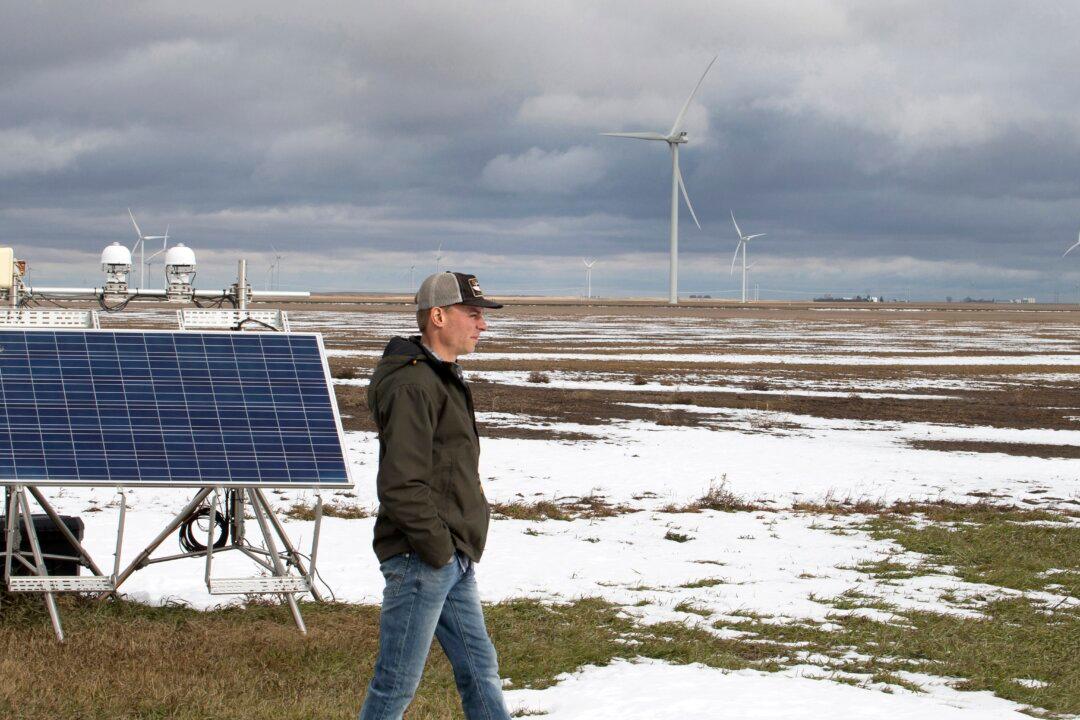Ottawa’s first green bond, to mobilize private sector investment for Canada’s transition to net-zero by 2050, has a climate finance expert questioning how such financing will serve the country’s needs without raising red flags.
The feds say the $5 billion, 7.5-year bond’s proceeds will finance investments in “green infrastructure and other projects that will help fight climate change and protect the environment.”
But Ross McKitrick, a University of Guelph professor specializing in environmental economics, says the taxpayer is bearing the risk instead of the private sector bond investor.
“If the government feels obliged to issue these bonds to fund targeted investments rather than leaving it to the private sector, then they must think either the investments have worse rates of return or have higher default risks,” McKitrick told The Epoch Times.
“The government is trying to claim both that the target investments are great opportunities, but also that the private sector doesn’t want them, so the government has to step in. This is obviously a contradiction.”
Canada’s inaugural $5 billion green bond had received over $11 billion in orders by March 22, with a majority of the buyers (72 percent) being “environmentally and socially responsible investors,” as described by the feds, and with 45 percent being international investors.
“Tapping into private sector capital requires a strong sustainable finance landscape where transparency and clear standards are guiding tenets,” states the feds’ green bond framework.
But McKitrick points out that Canada’s green bond investors aren’t actually taking any risk to finance the green transition.
“The [green] bond purchasers want to be able to signal to various stakeholders that they have put money into ‘green' investments even though they are really just buying risk-free fixed-income government securities,” McKitrick said.
“The ultimate cost to the taxpayers will emerge when we see what the funds are invested in and whether they generate any positive returns.”
McKitrick also notes, however, that there’s a risk of not having enough green projects to invest in that meet the criteria.
“The government may end up sitting on the cash for a long time, or they might find ways of redefining what a ‘green’ investment is, the way Europe now classes nuclear and natural gas as green energy for the purpose of regulatory compliance,” he said.
Ottawa’s criteria for its green bond investments rule out investments in nuclear power while including other forms of renewable energy, and also exclude investments in fossil fuel exploration and production—even though those are critical sectors of the Canadian economy.
Late to the Party
Green bond investment criteria have largely been determined by other countries and their investors, as the feds are relatively late in issuing such a bond. Ontario issued Canada’s first green bond in 2014, six years after the World Bank issued the first-ever green bond.
The Globe and Mail cites OECD data noting that 19 countries had already issued green bonds as of mid-2021, and that Canada saw green bond sales of US$14 billion in 2021, based on Refinitiv data.
According to the feds, “activities selected for inclusion under Canada’s green bond framework are based on best international practices followed by other sovereign green bond issuers in the G7.”
The framework sets out eligibility criteria based on the International Capital Markets Association’s green bond principles in nine areas, including clean transportation, climate change adaptation, energy efficiency, and pollution prevention and control.
The Globe and Mail reported that the feds said the proceeds from their green bond sales cannot be used for initiatives to lower oil and gas company emissions, since the exclusions to green bond investments stem from “exclusionary criteria embedded in major green bond indices” and “market expectations.”





